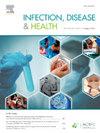Evaluating antibiotic prescribing practices for patients with asymptomatic bacteriuria in Saudi Arabia: The need for stewardship initiatives
IF 2
Q2 PUBLIC, ENVIRONMENTAL & OCCUPATIONAL HEALTH
引用次数: 0
Abstract
Background
Patients with asymptomatic bacteriuria (ASB) often receive unnecessary antibiotic treatment, leading to antibiotic resistance without improving patient outcomes. We qualitatively assessed antibiotic use in patients with ASB at a teaching hospital in Saudi Arabia.
Methods
This a retrospective observational study included patients diagnosed with ASB based on established criteria based on data collected through manual chart review. We evaluated antibiotic use, including indications, selection, and duration of therapy. Data were collected from August 2022–2023 and analyzed from December 2023 to May 2024.
Results
Among 1250 episodes of bacteriuria, 731 were classified as ASB. The percentage of appropriate ASB antibiotic prescriptions, as indicated by the guidelines, was 51.8 %; 27.7 % of patients received antibiotics for recommended cases, whereas 24 % did not receive antibiotics in the absence of recommendation. The percentages of appropriate antibiotic selection and duration of antibiotic prescription for appropriate indications were 72 % and 59.6 %, respectively.
Conclusion
Most bacteriuria among patients was ASB, with high rates of treatment and prolonged durations of therapy for ASB.
评估沙特阿拉伯无症状细菌性尿病患者的抗生素处方做法:管理举措的必要性。
背景:无症状细菌尿(ASB)患者经常接受不必要的抗生素治疗,导致抗生素耐药性,而没有改善患者的预后。我们对沙特阿拉伯一家教学医院ASB患者的抗生素使用情况进行了定性评估。方法:这是一项回顾性观察性研究,纳入了根据既定标准诊断为ASB的患者,这些标准基于手工图表复习收集的数据。我们评估了抗生素的使用,包括适应症、选择和治疗时间。数据收集时间为2022年8月至2023年,分析时间为2023年12月至2024年5月。结果:1250例细菌尿中,731例为ASB。根据指南,适当的ASB抗生素处方比例为51.8%;27.7%的患者在推荐病例中接受了抗生素治疗,而24%的患者在没有推荐的情况下没有接受抗生素治疗。正确选择抗生素的比例为72%,正确使用抗生素的比例为59.6%。结论:患者中细菌多为ASB, ASB治疗率高,治疗时间长。
本文章由计算机程序翻译,如有差异,请以英文原文为准。
求助全文
约1分钟内获得全文
求助全文
来源期刊

Infection Disease & Health
PUBLIC, ENVIRONMENTAL & OCCUPATIONAL HEALTH-
CiteScore
5.70
自引率
5.70%
发文量
40
审稿时长
20 days
期刊介绍:
The journal aims to be a platform for the publication and dissemination of knowledge in the area of infection and disease causing infection in humans. The journal is quarterly and publishes research, reviews, concise communications, commentary and other articles concerned with infection and disease affecting the health of an individual, organisation or population. The original and important articles in the journal investigate, report or discuss infection prevention and control; clinical, social, epidemiological or public health aspects of infectious disease; policy and planning for the control of infections; zoonoses; and vaccination related to disease in human health. Infection, Disease & Health provides a platform for the publication and dissemination of original knowledge at the nexus of the areas infection, Disease and health in a One Health context. One Health recognizes that the health of people is connected to the health of animals and the environment. One Health encourages and advances the collaborative efforts of multiple disciplines-working locally, nationally, and globally-to achieve the best health for people, animals, and our environment. This approach is fundamental because 6 out of every 10 infectious diseases in humans are zoonotic, or spread from animals. We would be expected to report or discuss infection prevention and control; clinical, social, epidemiological or public health aspects of infectious disease; policy and planning for the control of infections; zoonosis; and vaccination related to disease in human health. The Journal seeks to bring together knowledge from all specialties involved in infection research and clinical practice, and present the best work in this ever-changing field. The audience of the journal includes researchers, clinicians, health workers and public policy professionals concerned with infection, disease and health.
 求助内容:
求助内容: 应助结果提醒方式:
应助结果提醒方式:


